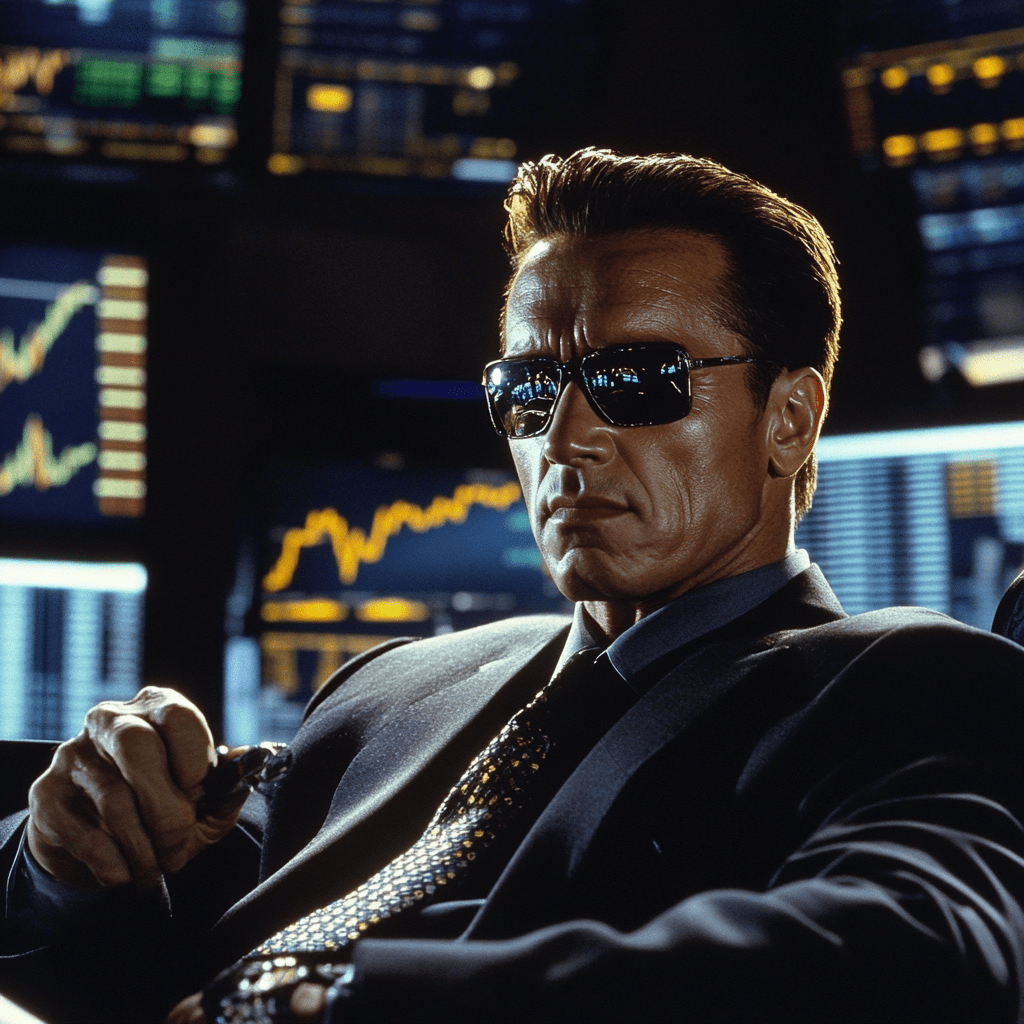Happy Friday, traders…
Ben here.
There’s a good reason Wall Street relies on algorithms (robots) to trade the markets: machines don’t have emotions.
They don’t panic when stocks fall, and they don’t get overly excited when charts rally. These trading algorithms follow strict rules and make decisions purely based on data. They’re completely free from the psychological traps that plague human traders.
Ideally, you want to trade like a hedge fund robot. Think of yourself as the ‘Terminator of Trading…’

You have one mission and one mission only — to profit in the options market.
No FOMO, no panic selling, no hesitation. Just cold, calculated decisions aimed at making the most money possible.
But here’s the problem — you aren’t a robot, you’re a human being. No matter how disciplined you think you are, there will come a moment when the market puts your emotions to the test.
At that moment, the question is: Will you let emotions drive your decisions, or will you trade like an unstoppable machine?

Today, I’ll show you how to say “Hasta la vista, baby” to your pesky human emotions and start trading like The Terminator…
Respond, Don’t React…
To succeed as a trader, you have to learn the difference between a response and a reaction.
Too many people react to what they see in the market, letting emotions like fear or excitement push them to make decisions.
But a reaction is just that — instinctual, fast, and often wrong — while a well-planned response is methodical and surgical.
The market is designed to make you react.
On the one hand, when a stock price suddenly drops, the instinctual reaction is to sell, get out, and protect yourself from further losses.
On the other hand, when a chart moves higher, the reaction is to jump in, fearing that you’ll miss out on the gains.
These emotional reactions are exactly what the market wants — it feeds off fear and greed, hoping traders make decisions that go against their best interests.
90% of traders walk directly into this trap.
Here’s how to avoid it:
- Identify your price targets and be disciplined about exiting your trades once you hit them.
- Don’t react to every tick on a chart. Instead, respond to the price action in a way that fits your strategy.
- Develop a trading plan (and stick to it).
- Understand you will feel different emotions at different times — but those feelings shouldn’t affect decision-making.
When Good Habits in Life Become Bad in Trading
To fight the natural instincts that work against you in trading, you need to be process-driven. This means setting up systems and rules for yourself that prevent emotions from taking over.
Trading based on loyalty, faith, or gut feelings won’t get you very far. These traits that often serve us well in life are the very things that can hurt you as a trader.
As a father, I’m always telling my three sons to “make the best of a bad situation” or “never give up.” In everyday life, these are great pieces of advice…
But in trading, those same principles can lead to disaster. Trying to “make the best” of a bad trade can cost you.
Maybe you bought a call option on a stock you were sure would go up, but now it’s sinking fast. Instead of admitting the mistake and exiting, you hold on, thinking it’ll turn around, and pay the price by taking a big loss.
You’re loyal to the stock. You have faith that your original decision was right…
But the market doesn’t care about your loyalty or faith. In fact, it will gladly weaponize those emotions against you.
I’m happily married to my wife. But I’ll never marry a stock (or a position).
I know when to let go. If the price action shows me I was wrong, I get out immediately and move on to the next trade.
Stubbornly holding on to a losing position will only dig you deeper into a hole. If a setup isn’t what you expected, don’t try to force it. Cut it and wait for a better opportunity.
Trading is less about how fast you can react to the market’s movements — and more about how well you can control your emotions.
Being calm, methodical, and prepared will put you ahead of those who let fear and greed dictate their actions.
So next time you’re faced with a big move in the market, take a breath, remember your plan, and respond — don’t react.
Trade like a robot.
Before we go, let’s look at:
💰The Biggest Smart-Money Bets of the Day💰
- $5.8 million bullish bet on TSLA 10/11/2024 $260 calls @ $5.90 avg. (seen on 10/3)
- $3.1 million bullish bet on XLE 01/17/2025 $100 calls @ $2.13 avg. (seen on 10/3)
- $1.5 million bullish bet on HPQ 01/17/2025 $37 calls @ $1.55 avg. (seen on 10/3)
P.S. Speaking of trading like a robot…
Jeff Zananiri has developed a brand-new algorithmic trading system, which has already delivered returns of 145% on QCOM, 235% on TECS, and even a staggering 900% on PBR…*
TODAY, October 4 at 12 p.m. EST, Danny Phee is hosting an URGENT LIVE WORKSHOP to show you how to take advantage of Jeff’s AI-powered GAMMA Code System.
Let AI help you find triple-digit trades — Click here to reserve your seat now!
*Past performance does not indicate future results



